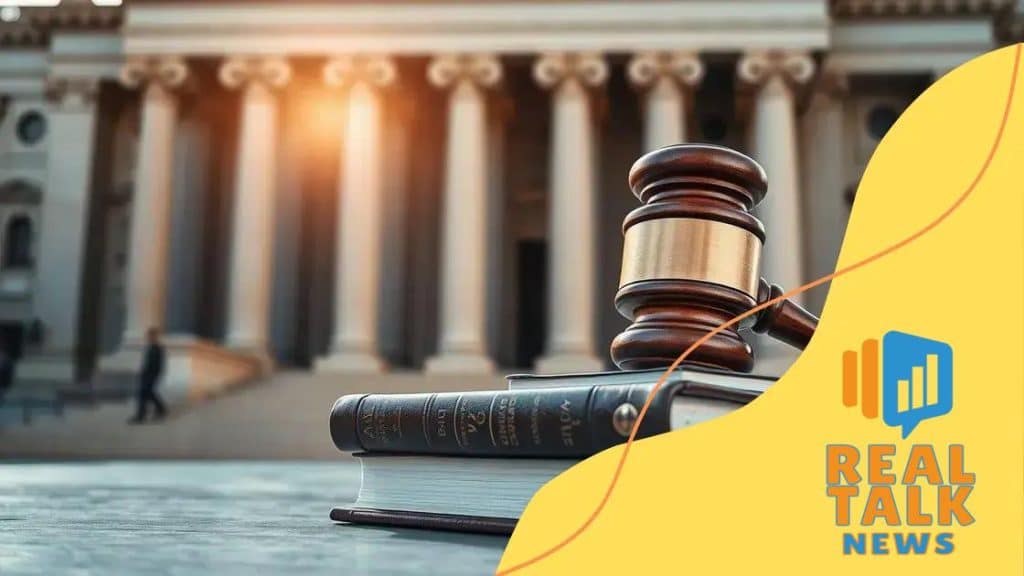Federal judge blocks Education Department closure: What the Ruling Means for Schools and Policies

Federal judge blocks Education Department closure, a decision that immediately shifts the conversation around public education in the U.S. The ruling keeps the department intact, preventing a sudden shake-up in policy and oversight.
This outcome is more than a courtroom headline. It touches every school district, educator, and family relying on consistent support from federal programs. Stability in education policy now feels less uncertain.
For many, the judgment signals a pause in drastic reforms, offering time to reassess how resources are distributed and how learning environments evolve. The debate about the department’s role, however, is far from over.
Overview of the ruling and its implications
The landmark decision by a federal judge blocks Education Department closure, halting President Trump’s March executive order aimed at dismantling the agency.
The court’s preliminary injunction, issued on May 22, 2025, prevents the mass layoffs and the transfer of key functions, reinstating staff and preserving essential services.
This ruling underscores the constitutional requirement that only Congress can authorize the dissolution of a federal department, affirming the checks and balances fundamental to U.S. governance.
Beyond legal formality, the judge’s action reflects deep concern about disruptions to student aid, civil rights enforcement, and special education support.
Stakeholders widely interpret it as a defense of institutional stability and democratic oversight in education policy.
What the Ruling Entails
When the federal judge blocks Education Department closure, the ruling restores the Department’s capacity to fulfill its statutory duties.
Over 1,300 employees terminated in March were ordered back to work, preserving the workforce required to process federal aid and maintain oversight.
The court rejected the administration’s justification of “efficiency,” noting the absence of evidence showing that drastic staff reductions or structural changes would benefit service delivery.
Instead, the judge highlighted the credible threats of “irreparable harm,” including delays in aid distribution and impaired enforcement of education laws.
Potential Implications
By preserving the Education Department’s structure and functions, the ruling delivers a measure of stability for schools and continuity in student and educator support systems.
It tempers abrupt policy overhauls that could leave districts and vulnerable populations scrambling.
In terms of future educational policies, this decision places the judiciary squarely in the mix, and suggests that executive attempts to bypass Congress may face sustained legal scrutiny.
Policy architects will likely proceed with greater caution, mindful that sweeping changes may be blocked if due process is ignored.
Reactions from stakeholders reflect both relief and strategic recalibration.
Educators’ unions and school administrators view the ruling as a reprieve that safeguards core services; policymakers favoring downsizing may now push reforms through legislative channels rather than executive mandate.
Responses from the Education Department
The Education Department’s response to the recent ruling is critical in understanding its future directions and commitments. This decision will certainly impact various programs and initiatives that aid students and schools.
Official Statements
When the Federal judge blocks Education Department closure, it marked a major juncture for the agency’s leadership to respond.
In the aftermath of the ruling, Education Secretary Linda McMahon reaffirmed that the department remains committed to delivering on its core missions, supporting students, preserving equitable educational access, and fulfilling statutory duties.
She emphasized that only Congress holds authority to eliminate a federal department entirely, and that all restructuring efforts would align with legal boundaries.
Simultaneously, the department continued to pursue its administrative realignment strategy.
Even while legal challenges were underway, officials had already formalized agreements to transfer major responsibilities: billions in education grants to the Department of Labor, student loan servicing to the Treasury, and carefully moved forward on these plans within the constraints of the ongoing injunction.
Engagement with Stakeholders
Right after the ruling, department officials intensified outreach to educators, administrators, and other stakeholders, emphasizing that the continued operation of federal programs, even amid restructuring, remained their priority.
Superintendent groups, unions, and advocacy organizations were engaged to assess how the halted closures and ongoing litigation affected financial aid, civil rights enforcement, and grant distribution.
Despite the judge’s block, there were tangible disruptions. Student aid offices, for example, experienced processing delays and outages shortly after staff reductions, underscoring the practical challenges created by uncertainty.
Local school leaders, especially those serving low-income or special needs students, echoed these concerns, highlighting the importance of a functioning Education Department in delivering resources and support.
Regions relying heavily on federal funding sounded the alarm that abrupt changes or unresolved restructuring efforts could severely impact educational stability.
Reactions from educators and students

The decision in which a Federal judge blocks Education Department closure has generated strong reactions from both educators and students.
For teachers, the ruling provided a sense of relief, as it halted a disruptive plan that had already led to layoffs and uncertainty in schools nationwide.
Educators stressed that keeping the department intact ensures stability in programs such as federal student aid, special education services, and civil rights enforcement, critical supports that allow them to concentrate on teaching rather than administrative chaos.
Teachers’ unions and advocacy groups have also emphasized the importance of dialogue with policymakers moving forward. They argue that while the ruling preserves the department, ongoing restructuring attempts and legal appeals continue to create anxiety.
Many believe their expertise should play a central role in shaping how federal resources are distributed, especially as the administration seeks alternative ways to reassign responsibilities to other agencies.
From the student perspective, the focus is on stability and opportunity. High school and college students alike worry about disruptions to financial aid and school resources, particularly after technical delays earlier this year highlighted the risks of reduced staffing.
At the same time, many express hope that the ruling will safeguard equitable access to learning tools, technology, and mental health services.
Student groups are increasingly vocal about wanting a seat at the table, urging leaders to incorporate their perspectives in decisions that directly affect their education and future.
Potential impacts on educational policies
The ruling has the potential to reshape educational policies significantly. Understanding its possible impacts is vital for schools, educators, and students alike. This situation provides an opportunity to evaluate how educational policies might evolve.
One immediate effect could be the adjustment of funding allocations from the Education Department. Schools that rely heavily on federal funds may find their budgets affected.
Schools in low-income areas often depend on these resources to enhance educational outcomes.
Maintaining strong funding can lead to improvements in curriculum and materials, which directly affects student learning. Thus, the ruling could be instrumental in ensuring that vital resources continue to flow where they are needed.
- Enhanced Support Programs: The ruling may encourage the development of new support programs aimed at assisting struggling schools.
- Adjustments to Accountability Standards: Educational institutions might see changes in accountability measures that ensure effective use of funds.
- Focus on Equity: There may be increased emphasis on equitable education access for all students, addressing existing disparities.
The potential for revised policies could be a driving force for positive change in the educational landscape. Each adjustment will be closely watched by all stakeholders, shaping the future direction of education in the country.
Next steps and future developments
The ruling in which a Federal judge blocks Education Department closure has not ended the uncertainty surrounding federal education policy.
While the injunction restored key functions of the agency, the administration has already appealed, pushing the case toward the Supreme Court.
This means that the department’s long-term future remains contested, and stakeholders across the country are bracing for further legal and political battles.
In the short term, the Education Department is focused on stabilizing operations after the mass layoffs and disruptions triggered by the original closure order.
Officials have begun reinstating staff and reestablishing program oversight, from student aid processing to grant distribution.
Educators and administrators are seeking clear communication on how funding streams will be maintained, as temporary outages earlier this year revealed the real risks of weakened federal infrastructure.
Looking ahead, collaboration with states, school districts, and community leaders will be critical. Workshops and consultations are expected to address how potential policy shifts, whether through further court rulings or congressional negotiations, might affect schools.
The department has emphasized building stronger feedback loops with educators, parents, and student organizations to ensure their voices inform the path forward.
While the immediate focus is on compliance with the ruling, the broader debate over the federal role in education is far from resolved, signaling that the next phase will be as much about political will as judicial oversight.
FAQ – Frequently Asked Questions About Education Policy Changes
What is the impact of the recent federal judge ruling on education?
The ruling helps maintain the Education Department’s support for schools, ensuring funding and resources are available.
How are educators responding to the changes?
Many educators are relieved and hopeful that the ruling will lead to improved policies and better learning conditions for students.
What steps will be taken after the ruling?
Next steps include the Education Department implementing the ruling and engaging with communities to gather feedback for future developments.
Why is collaboration important in this context?
Collaboration ensures that the voices of educators, students, and parents are considered, leading to effective and inclusive educational reforms.





